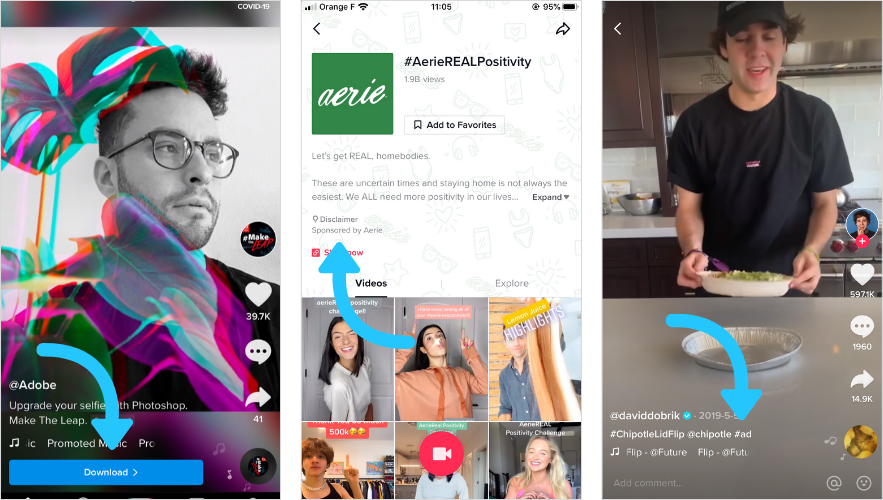TikTok provides five primary ad formats: branded hashtag challenges, brand takeover ads, in-feed ads, and top-view ads.
The majority of these forms include social video, which is expected to see increased spending. According to Magna Global, short-form video ad spending will increase by 10.4% to $18.3 billion by 2023.
The app’s future in the US is up in the air following a contentious appearance before Congress, but there is still time for it to win over the governments of the US and other countries that have banned it from devices.
Budgets could be moved fairly easily if necessary because social media apps have long cannibalized each other’s features for marketers looking ahead. Some platforms that might house short videos include Instagram Reels, Snapchat Spotlight Ads, YouTube Shorts Ads, and Facebook Stories. Earlier this year, YouTube Shorts alone saw 50 billion daily views; in the first quarter of 2022, that number was only 30 billion. The rivals are bigger, but they don’t yet have TikTok’s buzz or, one could argue, its present cultural cachet.

According to a survey of 300 US marketers, three out of four plan to increase their spending on TikTok over the next year, so many marketers are still openly maintaining their faith in the platform. This could be a sign of them maintaining their trust or it could be a case of a company burying its head in the sand. That is still up in the air.
In two years, TikTok’s US net ad earnings could increase to $11 billion. Its 2.4% share of US digital advertising expenditure in 2022 is similar to YouTube’s. And it has already outperformed Twitter, which has its own issues with marketers. TikTok will generate $15.2 billion in worldwide advertising revenue in 2023, according to data from the World Advertising Research Center (Warc). One-third of that will originate in the US.
Related: TikTok And Fraser T Smith Launch #BehindTheSong
Regarding the amount spent on influencer marketing, information made public in July 2022 shows that TikTok made $774.8 million in 2022, surpassing Facebook and YouTube by 2024, putting it only behind Instagram, the influencer industry’s behemoth. Influencers have been advised to keep a presence across several apps in order to protect themselves as much as possible from the pitfalls of large platforms. The majority will probably continue to use the tried-and-true applications.

What professionals advise…
Marketing professionals who depend exclusively or primarily on TikTok “should think about how and where they can diversify their spending,” says Jasmine Enberg, principal analyst at Insider Intelligence’s eMarketer. Even if it isn’t prohibited, that is.
She believes that YouTube Shorts and Instagram Reels may be the “next best thing.” Additionally, she cautions against over-indexing in short-form videos because Gen-Z is not exclusively engaged with them.

Related: The Music Business Is Holding Its Breath As The Government Threatens To Shut Down TikTok
The Drum quotes James Townsend, global chief executive of Assembly, an omnichannel media firm, and chief executive of Stagwell’s Brand X Performance Network, as saying: “We are in a wait-and-see game and we don’t think marketers should pull back on day-to-day investments just yet. Digital platforms have the advantage of being quick and real-time, and they can be paused according to day-of market dynamics.
TikTok is not the only social media platform with a dubious track record for data security; Google and Facebook have also suffered reputational damage and fines for the same reason, as Joshua Lowcock of UM Worldwide correctly points out. “It’s time to face the reality that large platforms virtually all collect and use data in the same manner. We are racing into the digital age while operating in an information economy that deals with an infinite amount of data.
Download The Radiant App To Start Watching!
Web: Watch Now
LGTV™: Download
ROKU™: Download
XBox™: Download
Samsung TV™: Download
Amazon Fire TV™: Download
Android TV™: Download

